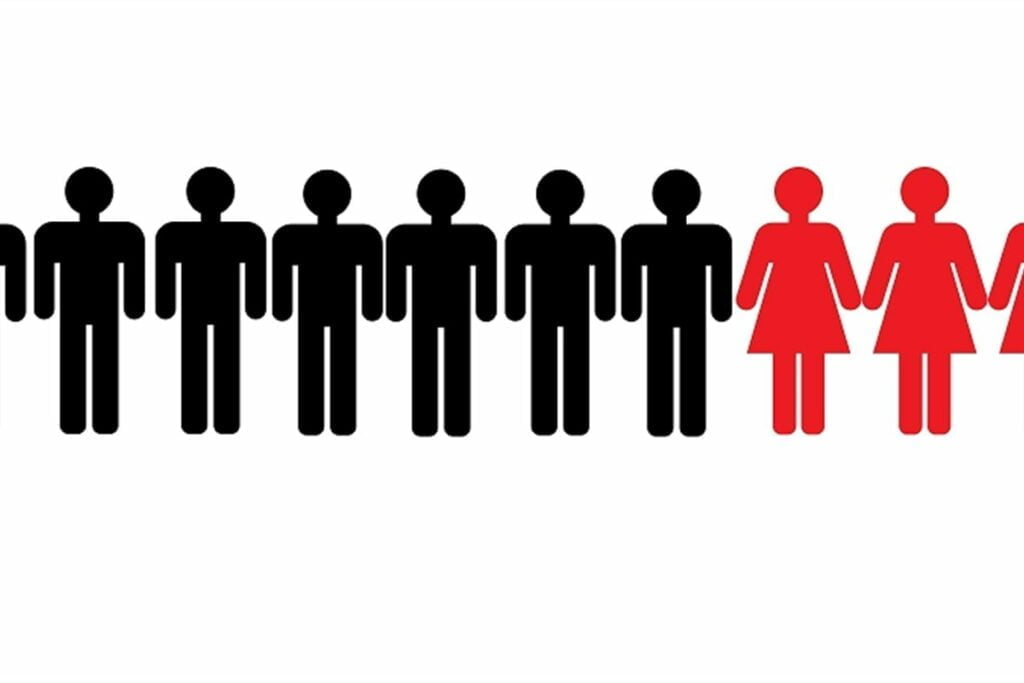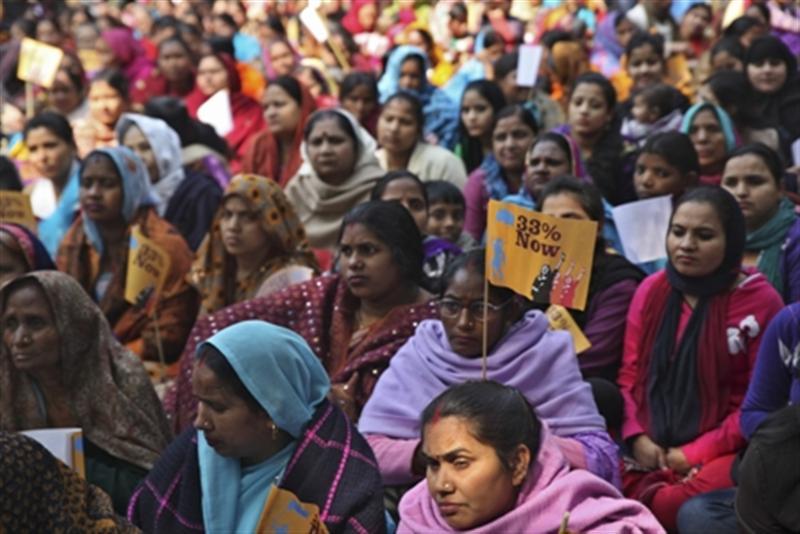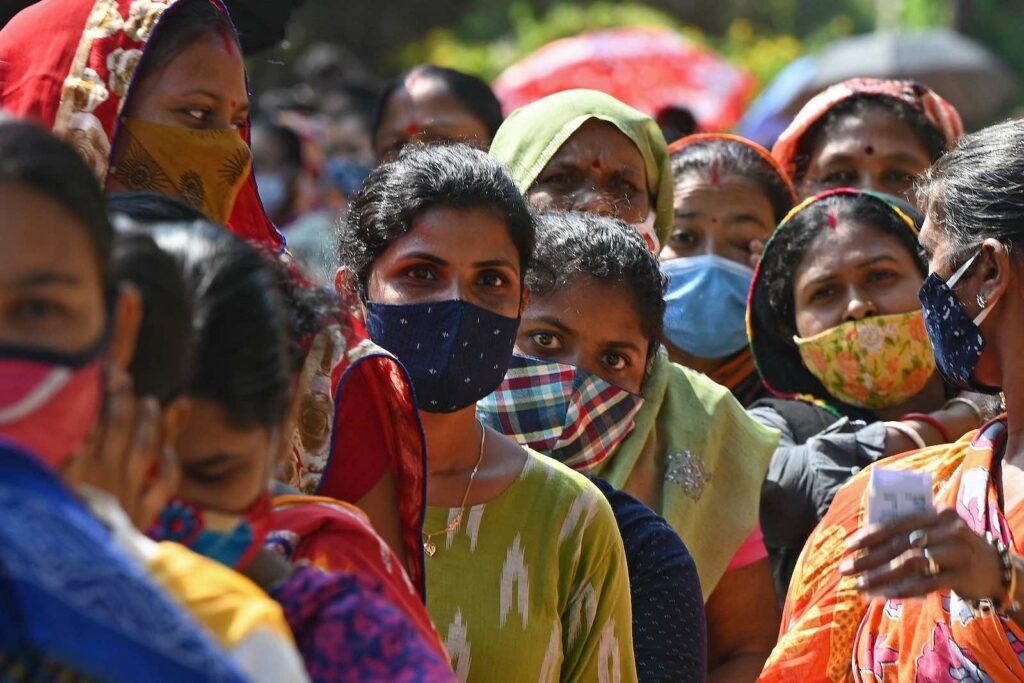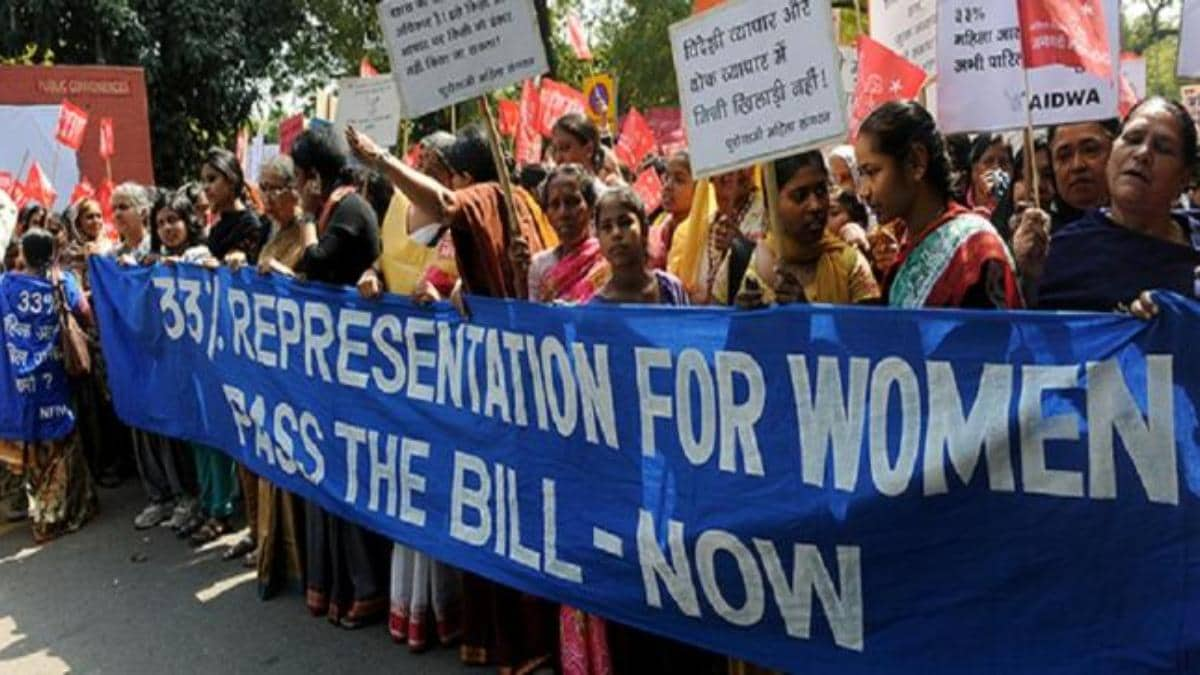Women for long have been underrepresented in politics and as we go up the social ladder of politics, the under-representation becomes more acute. In 2022, the Gender Equality Index has improved but the road to gender progress continues to remain long. For the first time, women representation in New Zealand Parliament crossed a 50% benchmark. However, globally women only occupy 26% of the parliamentary seats as lawmakers. Further, When we analyse this percentage of women in legislature positions in India, it is discovered to be a meagre 14.4% of women in Lok Sabha. Women continue to lag behind in political representation around the world, especially in India despite constitutional reservations provided to women. Women continue to face structural constraints such as inaccessibility to institutions, male dominated party structure, societal prejudice, etc.
It is often argued that men are over-represented in the state structure, which is why it continues to remain patriarchal and prioritises male interests over women. Further, women are concentrated in lower administrative positions and are extremely underrepresented in key decision-making positions with gendered division of political areas of responsibility. This analysis is rooted in the “sex-role theory,” which argues that the “imperfect citizenship” of women is a result of exclusion from the public realm and socialisation into traditional roles while overlooking the role of the gendered division of labour, legitimization of force, and violence in maintaining the female subordination.

Citizenship is citizens’ relationship with the state regarding their rights and the state’s obligation towards them. Citizenship is based on the doctrines of inclusion and exclusion of citizens from accessing their entitlements such as infrastructure, housing, and livelihood opportunities. In India, women experience imperfect citizenship, and their social location further impinges on their ability to engage in the public sphere and with the state for their rights. Constitutional guarantees of equal rights do not translate into full citizenship in case of social barriers and public-private distinctions, which would continue unless the state takes on a proactive role to counter them. Therefore, inaction or passiveness of the state could undermine the enforcement of guaranteed citizenship rights for women.
Also read: Women’s Reservation Bill Is Not A Joke! Examining The Need For Quotas Within The Quota
For instance, ownership of land is significant to economic security and autonomy. In India, where agriculture remains the dominant mode of employment, the burden of exploitation and poverty characterising landless agricultural labour falls predominantly on women. 85% of Indian rural women are in agriculture, with only 13% owning land. Moreover, the majority of landless comprise Adivasis and Dalit women. The puzzling scenario about the Indian state is that it does not recognise women as farmers without land ownership. Therefore, due to the deliberate invisibilization of landless women farmers, women face limitations on their public engagement with the state and the market.
Given that landless women, particularly Dalit women, go unrecognised as farmers and they are often ineligible for agricultural credit and other state facilities provided to farmers otherwise. In this case, Dalit women become dependent on their husbands for survival and sometimes the upper-caste landowners for credit or social protection in the absence of their husbands.
Given that landless women, particularly Dalit women, go unrecognised as farmers, they are ineligible for agricultural credit and other state facilities provided to farmers otherwise. In this case, Dalit women become dependent on their husbands for survival and sometimes the upper-caste landowners for credit or social protection in the absence of their husbands. This creates an exploitative ecosystem for women where they experience gender and caste based violence.

Therefore, liberal feminists have long argued that “women ought to recapture the state machinery” for engendering the state institutions and processes. However, for women to be able to recapture the state machinery, women need to contest for parliamentary and legislative elections which remain largely inaccessible to them as political parties continue to remain heavily masculine.
Adequate female representation in a vacuum does not bring any fundamental change in terms of gender equity. Engendering state machinery requires a parallel process of engendering policy with structural changes to address inequality of resources and power. For instance, parallel to increasing women’s representation through quotas, addressing gender budgeting is equally crucial.
Further, the successful rise of Hindu nationalism in recent decades in Indian politics has gendered implications as well. Hindu nationalism is inspired by ideologies of masculinization of Hinduism, centering around the symbolism of war against enemies of “motherland” and masculine imagery of warriors as protectors reasserts the Hindu masculine hegemony. This further facilitates marginalisation of women from the public realm and pushes them into the domestic sphere of reproduction.
Also read: Muslim Women In Indian Politics: Reservation Proposed by the AIMMM
State is a product and producer of unequal gender relations. Therefore, the institutions shape political behaviour and outcomes in a gendered manner and constitute the roles and identities of men to women in the political arena. This has led to the systemic and state-facilitated exclusion of women from positions of power as strategic positions in the state are often masculinized. Moreover, the continued dominance of patriarchal interests and masculinized characteristics of the state have led to the marginalisation of the social sectors which includes healthcare, education and welfare.

Therefore, adequate female representation in a vacuum does not bring any fundamental change in terms of gender equity. Engendering state machinery requires a parallel process of engendering policy with structural changes to address inequality of resources and power. For instance, parallel to increasing women’s representation through quotas, addressing gender budgeting is equally crucial. Gender equity in the truest sense will require engendering the budget that continually allots meagre resources to the social sectors, devising policies to structurally increase women’s participation in key decision making positions in policy space and adopting a gendered lens to address intersectional developmental issues.





I agree with Arushi that representation of women is less in politics, economics and in employment. Policymakers need to rethink on this issue.
Under-representation of women in Indian politics is less recognised but highly debated issue. Reservations of seats for women in Panchayats and local self-governmnets can be emulated in Assembly and general election in India as well as the facilities for women like sanitation, crèche are to be genuinely recognised and incorporated in drafts of policies to reflect upon the India’s effort to implement gender inclusivity in the temple of democracy, also. Thus India would become the true Vishwaguru and it would be helpful to realise AMRIIT KAAL